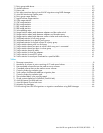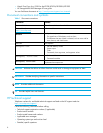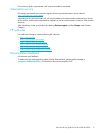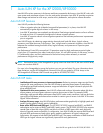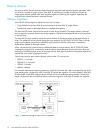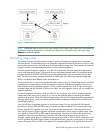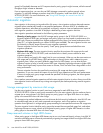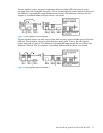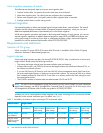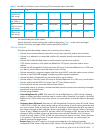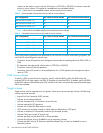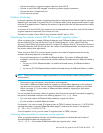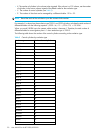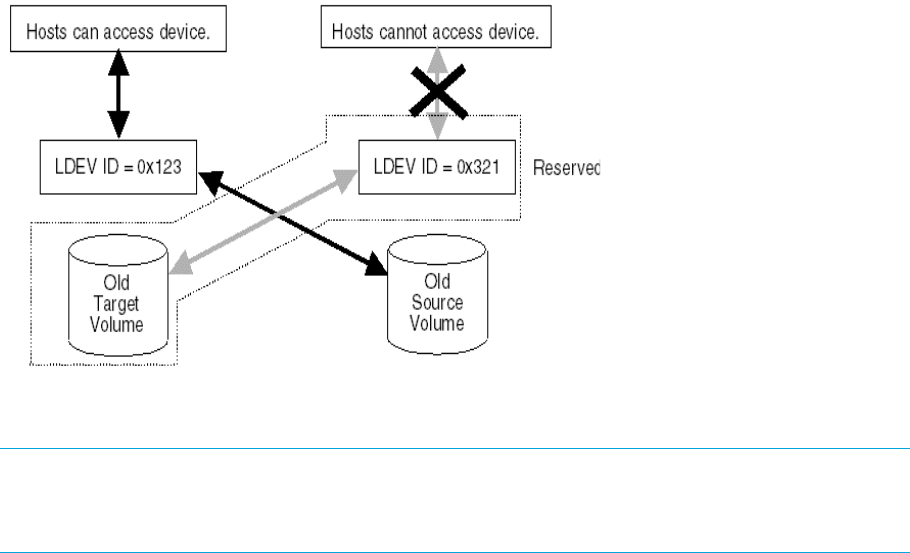
Auto LUN XP user guide for the XP12000/XP10000 13
Figure 2 Data Flow after an Auto LUN XP operation
NOTE: Immediately after a source volume and a target volume replace each other, RAID level before the
replacement might be displayed or an internal error might occur in the disk array. In this case, select
Refresh to update the display.
Estimating usage rates
The estimate function calculates expected usage of source and target parity groups after a proposed
volume migration. The estimate function uses subsystem usage data collected by the monitor function, HDD
performance characteristics, and RAID level to estimate expected usage rates. The automatic and manual
migration functions use these estimated values to verify proposed migrations.
For each proposed migration operation, Auto LUN XP automatically estimates expected usage rates for
source and target parity groups. The estimate function calculates expected results of a proposed volume
migration based on XP12000/XP10000 monitor data collected during the user-specified monitor data
term. The estimate function considers RAID level and HDD type when estimating expected usage rates
(RAID-1 and RAID-5 have different access characteristics).
The estimate function is a critical component of the auto migration function. The estimate function calculates
expected parity group usage for source and target parity groups, and the auto migration function uses
these estimates to verify proposed migrations. If any condition prevents Auto LUN XP from estimating an
expected usage rate (for example, invalid monitor data), the auto migration function will not schedule the
migration operation.
For manual migration operations, when you select the source volume, Auto LUN XP displays expected
usage rates for the source parity group, so you can see the predicted effect of migrating the selected
volume out of its group. When you select the target volume, Auto LUN XP displays expected usage rates for
the target parity group, so you can see the predicted effect of adding the selected source volume to the
selected parity group.
Auto LUN XP does not estimate processor or access path usage. You can use Auto LUN XP migration
operations to improve DKP and DRR usage, but cannot use them to address CHP or access path usage.
Perform Auto LUN XP migration only when you expect a large improvement in disk array performance.
Auto LUN XP migration might not provide significant improvement if parity group or volume usage varies
only slightly or if overall DKP or DRR usage is relatively high. Also keep in mind that disk array tuning
operations might improve performance in one area while decreasing performance in another. For
example, suppose parity groups A and B have average usage values of 20% and 90%, respectively. Auto
LUN XP estimates that if one logical volume is migrated from parity group B to parity group A, the usage
values will become 55% and 55%. If you perform this migration operation, I/O response time for parity



